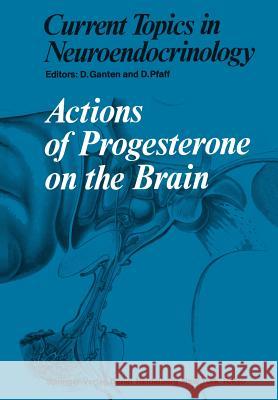Actions of Progesterone on the Brain » książka
Actions of Progesterone on the Brain
ISBN-13: 9783642697302 / Angielski / Miękka / 2011 / 216 str.
It is well established that progesterone plays a role in the brain and hypophysis as a facilitator and inhibitor of sexual behavior and gonadotropin release in the female rat (Everett 1961; Caligaris et al. 1971; Brown-Grant and Naftolin 1972; Dorner 1972; Meyerson 1972; Barraclough 1973; Goldman and Zarrow 1973; Mann and Barraclough 1973; Freeman et al. 1976; Feder and Marrone 1977; Goodman 1978; Attardi 1981), guinea pig (Morin and Feder 1974), and primates (Odell and Swerdloff 1968; Spies and Niswender 1972; Yamaji et al. 1972; Karsch et al. 1973; Dierschke et al. 1973; Knobi11974; Clifton et al. 1975). In an attempt to learn whether a specific progesterone uptake mechanism exists in the brain and the hypophysis, the distribution and retention pattern of radioactivity after in vivo injection of labeled progesterone was studied. Early work of Kato (1963) did not show a selective uptake of radioactivity in the hypo- thalamus of immature and estrogen-primed immature rats after injection oflow- specific-activity [14C]progesterone, but some tendency of the reticular formation to take up radiation was observed. Laumas and Farooq (1966) reported that after intravenous administration of labeled progesterone to ovariectomized estrogen- treated rats, radioactivity in the brain and pituitary appeared to show a very slight, insignificant increase 1-2 min after injection, but the uptake pattern was not definite, as had been seen with estradiol. Seiki et al.











